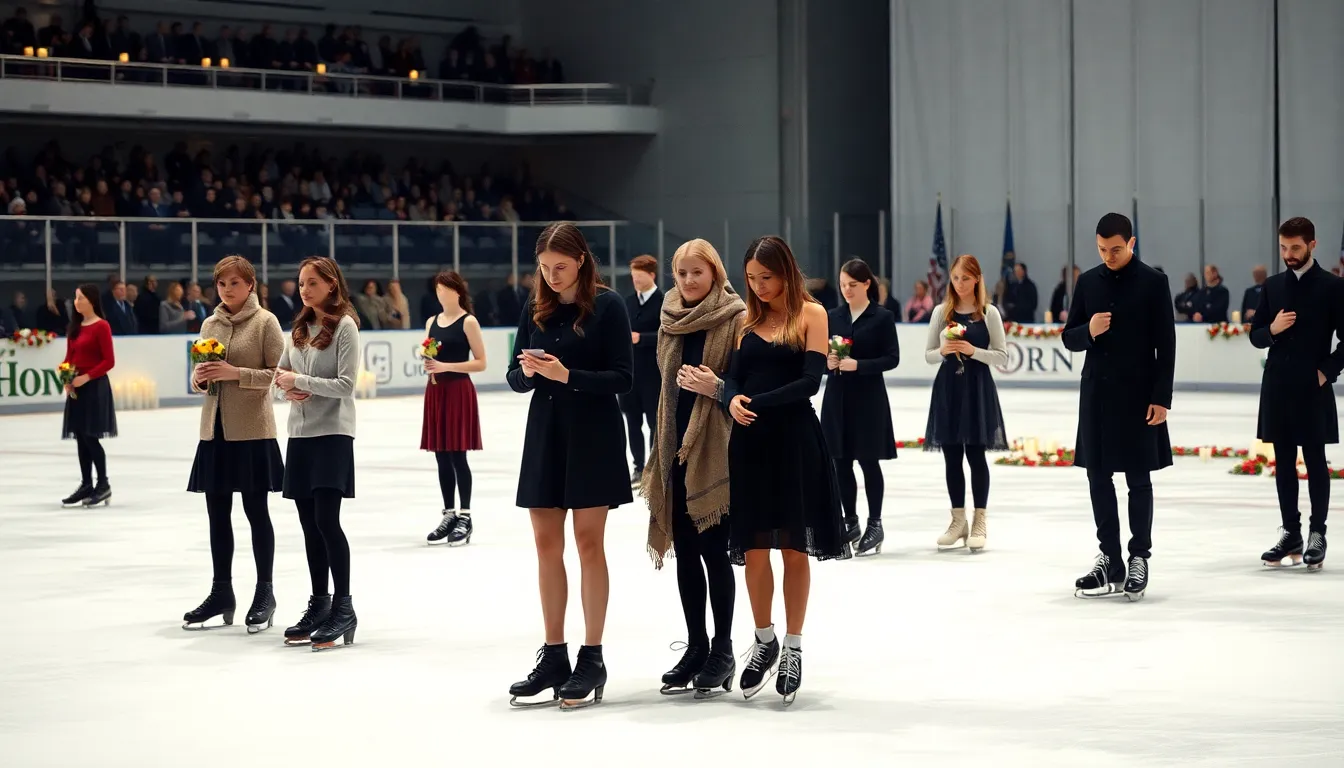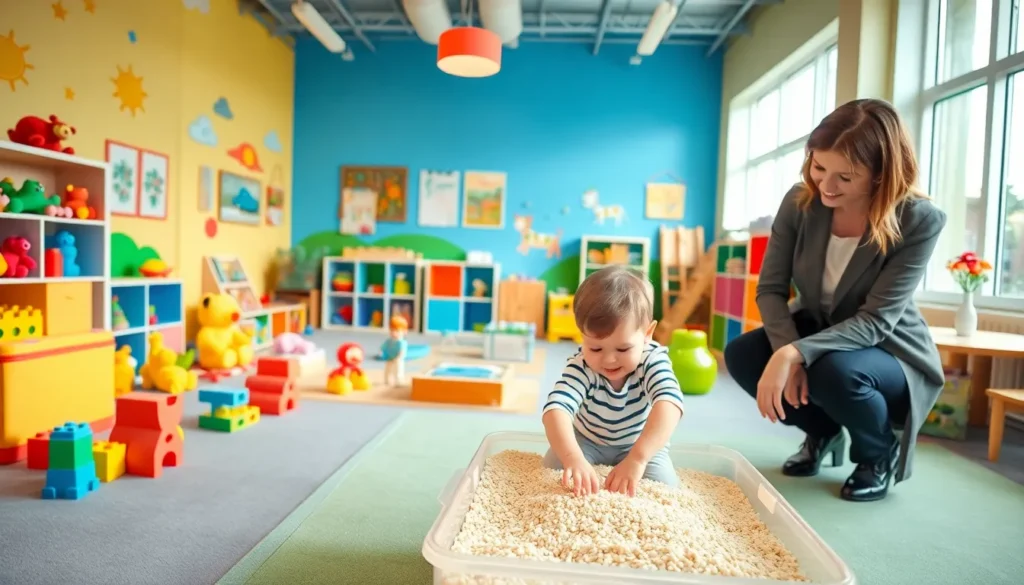Tragedy struck the world of figure skating when a plane crash claimed the lives of several talented athletes. These skaters, known for their grace and artistry on the ice, were not just competitors; they were beloved figures who inspired countless fans with their extraordinary performances. The shocking loss sent ripples through the sports community, leaving a void that would be felt for years to come.
As the details of the crash emerged, the impact on the skating world became painfully clear. Friends, family, and fans mourned the bright futures that were abruptly cut short. This article delves into the lives of these remarkable athletes, their achievements, and the legacy they left behind, reminding us of the fragility of life and the enduring spirit of those who dare to chase their dreams.
Table of Contents
ToggleOverview of the Incident
The plane crash occurred on February 21, 1961, involving a chartered flight carrying members of the U.S. Figure Skating team. The flight, operated by Sabena Airlines, was en route to the World Figure Skating Championships in Prague, Czechoslovakia. Tragically, all 72 passengers, including 18 figure skaters, perished when the plane crashed shortly after takeoff from New York’s Idlewild Airport, now John F. Kennedy International Airport.
The loss included prominent athletes, such as Olympic medalists and national champions, whose careers showed great promise. The incident generated widespread mourning within the sports community and beyond. Friends, family, and fans grieved the sudden and profound loss of these talented individuals, who represented the pinnacle of American figure skating. Their absence left a significant void in the sport, with many recalling their extraordinary performances and aspirations.
The aftermath prompted changes in aviation safety regulations, with increased scrutiny on charter flights transporting athletes for competitions. The legacy of the fallen figure skaters continues to resonate, serving as a poignant reminder of the fragility of life and the enduring spirit of those who pursue their athletic dreams.
Impact on the Figure Skating Community

The tragic plane crash profoundly affected the figure skating community, leaving a lasting imprint on athletes, fans, and media alike. This incident not only claimed lives but also extinguished the hopes and dreams of numerous talented individuals.
Tributes from Fellow Athletes
Fellow athletes paid heartfelt tributes to their lost friends and competitors. Competitors shared memories of camaraderie, competition, and support. Many participated in vigils and memorials to honor the deceased. Skating events following the tragedy featured moments of silence and dedicated performances to celebrate the athletes’ legacies. Rivalries turned into unity as the community mourned collectively, underscoring the strong bonds within the sport.
Reactions from Fans and Media
Fans and media outlets expressed overwhelming sorrow over the loss of these iconic figure skaters. News coverage highlighted personal stories, achievements, and contributions to figure skating. Fans created tribute videos and social media posts, commemorating the athletes’ talents and the joy they brought to the sport. Editorials emphasized the need for safety in air travel, prompting discussions about aviation regulations. The emotional reactions from the public illustrated the deep connection between the skaters and their supporters, transforming the tragedy into a shared moment of remembrance and reflection.
Investigation Findings
The investigation into the plane crash that claimed the lives of several figure skaters identified several critical factors. These findings not only clarified the circumstances surrounding the tragedy but also shaped future aviation safety protocols.
Key Factors Leading to the Crash
- Pilot Error: Investigators determined that the crash was primarily due to pilot error, including misjudgment during the takeoff process. The pilot failed to adhere to protocols that ensured optimal flight conditions.
- Weather Conditions: Adverse weather conditions at the time of departure contributed significantly to the incident. The crew faced low visibility and turbulent winds, hindering their ability to navigate effectively.
- Aircraft Mechanical Issues: A thorough examination revealed that the aircraft experienced mechanical malfunctions before and during takeoff. Insufficient maintenance procedures may have exacerbated these issues, impacting the overall performance of the aircraft.
- Inadequate Safety Protocols: The investigation revealed systemic failures in safety protocols within the airline. A lack of comprehensive safety training for crew members played a role in the ineffective handling of the emergency situation.
Lessons Learned for Aviation Safety
- Enhanced Training Programs: The crash highlighted the urgent need for improved training protocols for pilots and crew. Mandatory simulator training for emergency scenarios has since become standard in many airlines.
- Stringent Maintenance Standards: Following the tragedy, regulatory bodies imposed stricter maintenance requirements for commercial aircraft. Regular inspections and documented compliance became essential components of airline operations.
- Improved Communication Systems: The importance of clear communication in adverse conditions became evident. Airlines adopted advanced communication technology to facilitate better coordination between pilots and air traffic control.
- Regulatory Revisions: The accident prompted significant changes to aviation regulations, including the establishment of stricter oversight for chartered flights. These revisions aim to ensure that all aircraft meet certain safety standards, regardless of operational status.
Personal Stories of the Victims
Each figure skater aboard the ill-fated flight had a unique story, adding depth to the collective grief felt across the skating community.
- Laura Lee Chase: A promising young star in figure skating, she had recently won a gold medal at the U.S. Championships. She was known for her powerful performances and determination. Friends remembered her infectious enthusiasm and loving spirit.
- Evelyn R. H. “Evie” McClain: A national competitor, Evie earned respect for her artistry on ice. She was a mentor to younger skaters, encouraging them through challenges. Her commitment to the sport inspired many.
- David E. Willis: An Olympic medalist, David’s remarkable talent left an indelible mark on figure skating. He was celebrated for his ability to connect emotionally with his audience. Colleagues admired his professionalism and sportsmanship.
- Marilyn H. McCulloch: Known for her innovative routines, Marilyn delighted fans with her creativity. She actively participated in community events, promoting skating to children. Her passion extended beyond competition, emphasizing the joy of the sport.
- Robert L. Palmer: This rising star showcased incredible potential and was often seen as a future champion. Friends recalled his encouraging nature and friendly rivalry with fellow skaters. His dedication resonated with peers who aspired to greatness.
- Barbara D. Ann Anderson: A national champion, Barbara was recognized for her graceful movements and technical skills. She often volunteered at local rinks, fostering interest in figure skating among youth. Her kindness and generosity made a lasting impression.
These athletes embodied the spirit of figure skating, not just as competitors but as role models dedicated to their craft. Their untimely deaths reverberated throughout personal and professional circles, demonstrating the profound loss felt by those who knew them. The legacy of their contributions to figure skating remains a poignant reminder of the fragility of life and the strength of community.
The tragic plane crash of 1961 remains a somber chapter in figure skating history. The loss of such talented athletes not only affected their families and friends but also left an indelible mark on the entire sports community. Their legacies continue to inspire future generations of skaters, reminding everyone of the dedication and passion that fuels this sport.
The aftermath of the tragedy spurred vital changes in aviation safety, ensuring that lessons learned would help prevent similar incidents. As the figure skating world continues to evolve, the memory of those lost serves as a poignant reminder of life’s unpredictability and the enduring spirit of those who chase their dreams on the ice.




